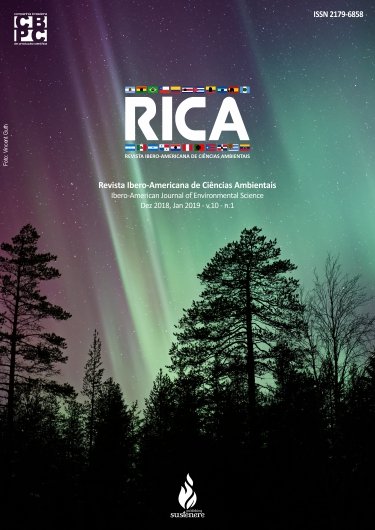Methane production from anaerobic codigestion of wastewater from parbolized rice and dairy industries
DOI:
https://doi.org/10.6008/CBPC2179-6858.2019.001.0012Keywords:
cosubstrat, inoculum, sludge, wastewater, anaerobic codigestionAbstract
The rice and dairy processing industries generate effluents with high polluting potential that require alternative treatment models. In this sense, anaerobic codigestión emerges as a preliminary treatment process capable of providing clean energy during its fermentation processes. The objective of this study was to evaluate the best mixing ratio of substrates and inoculum to increase the efficiency of methane production from anaerobic codigestion with sludge from the rice industry (inoculum) and effluent from the dairy and parboiled rice industries (substrates), generated in Rio Grande do Sul, by means of an experimental design with factorial arrangement 2³, quantifying the generated methane, through a system developed based on the displacement of fluids, and pH and Chemical Oxygen Demand analyzes. The experiment was carried out in batch at 35 ° C for 252 hours. The highest methane production, 1.50 dm³, occurred in the biodigestor that received 40% of rice effluent, 20% of dairy effluent and 30% of inoculum. Regarding the removal of Chemical Oxygen Demand (COD), the biodigesters that removed the highest COD loads were mostly the same ones that produced higher volumes of methane, with removals of up to 76.74%. All points showed acidity in their input samples and neutrality in the output samples. As for the gas quantification system developed in the study, it showed high efficiency, with low standard deviation and coefficient of variation.
Downloads
Downloads
Published
Issue
Section
License
The CBPC - Companhia Brasileira de Produção Científica (Brazil CNPJ: 11.221.422/0001-03) the material rights of the published works. The rights relate to the publication of the work anywhere in the world, including rights to renewals, expansions and dissemination of the contribution, as well as other subsidiary rights. All electronically published works may subsequently be published in printed collections under the coordination of this company and / or its partners. The authors preserve the copyright, but are not allowed to publish the contribution in another medium, printed or digital, in Portuguese or in translation.









